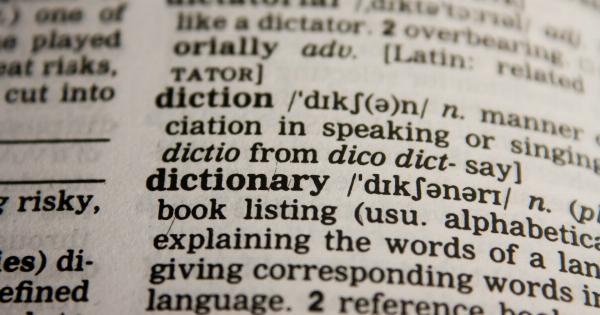Dyslexia is a condition that affects language processing centeredness in the brain. It is a type of learning disability that manifests in reading, spelling, and writing in children.
It can occur in any child, and there are some common signs that parents, teachers, and caregivers can look out for. In this article, we will explore the signs of dyslexia in children by age.
Age 3-4
In the first few years of life, children develop their language and communication skills. Children with dyslexia may struggle at this stage to:.
- Learn nursery rhymes or the alphabet
- Learn the names of letters and sounds
- Remember simple instructions and sequences
- Speak fluently or find the right words to express themselves
Age 5-6
As children enter kindergarten and first grade, they are starting their literacy journey. At this age, children with dyslexia may:.
- Read slowly and struggle with phonics
- Confuse similar-looking letters like “b” and “d”
- Find it hard to spot rhyming words, or write their names without help
- Struggle to follow instructions and recall directions
Age 7-8
As children enter second and third grades, they are expected to be able to read and write independently with a good level of comprehension. Children with dyslexia may experience challenges in:.
- Reading aloud or understanding what they have read
- Spelling words correctly and writing coherently
- Remembering simple words like “the,” “and,” or “because”
- Recognizing sight words or decoding new words
Age 9-10
As children enter fourth and fifth grades, they will be expected to read and comprehend more complex texts. Children with dyslexia may experience challenges in:.
- Reading longer texts without struggling or needing to read more than once
- Forming paragraphs that are structured and well-written
- Understanding figurative language or expressing abstract ideas
- Following written instructions or problems that require critical thinking
Age 11-12
In sixth grade and junior high, children are expected to be independent learners and take on more challenging work. Children with dyslexia may experience challenges in:.
- Reading and analyzing longer texts in different genres like fiction, non-fiction, and poetry
- Writing essays that are structured, well-organized, and demonstrate critical thinking
- Following written instructions for assignments and projects and completing them independently
- Using more complex vocabulary or understanding new words from context
Age 13-18
In high school, children will be expected to read, write, and comprehend complex texts and ideas from different subjects. Children with dyslexia may experience challenges in:.
- Reading and analyzing literature, scientific texts, and academic papers for research papers or projects
- Writing research papers, lab reports, or essays that demonstrate critical thinking, argumentation, and original thought
- Following written instructions for exams, quizzes or papers that require higher order thinking skills
- Summarizing long texts or ideas for class discussions or debate
Conclusion
Dyslexia is a learning disability that affects children’s ability to read, write, and spell words correctly. It can occur at any age, and there are common signs that parents, teachers or caregivers can look out for.
Early detection and intervention are crucial for the child’s academic success and overall well-being. If you suspect your child has dyslexia, reach out to their school or a learning specialist for further evaluation and assistance.



























